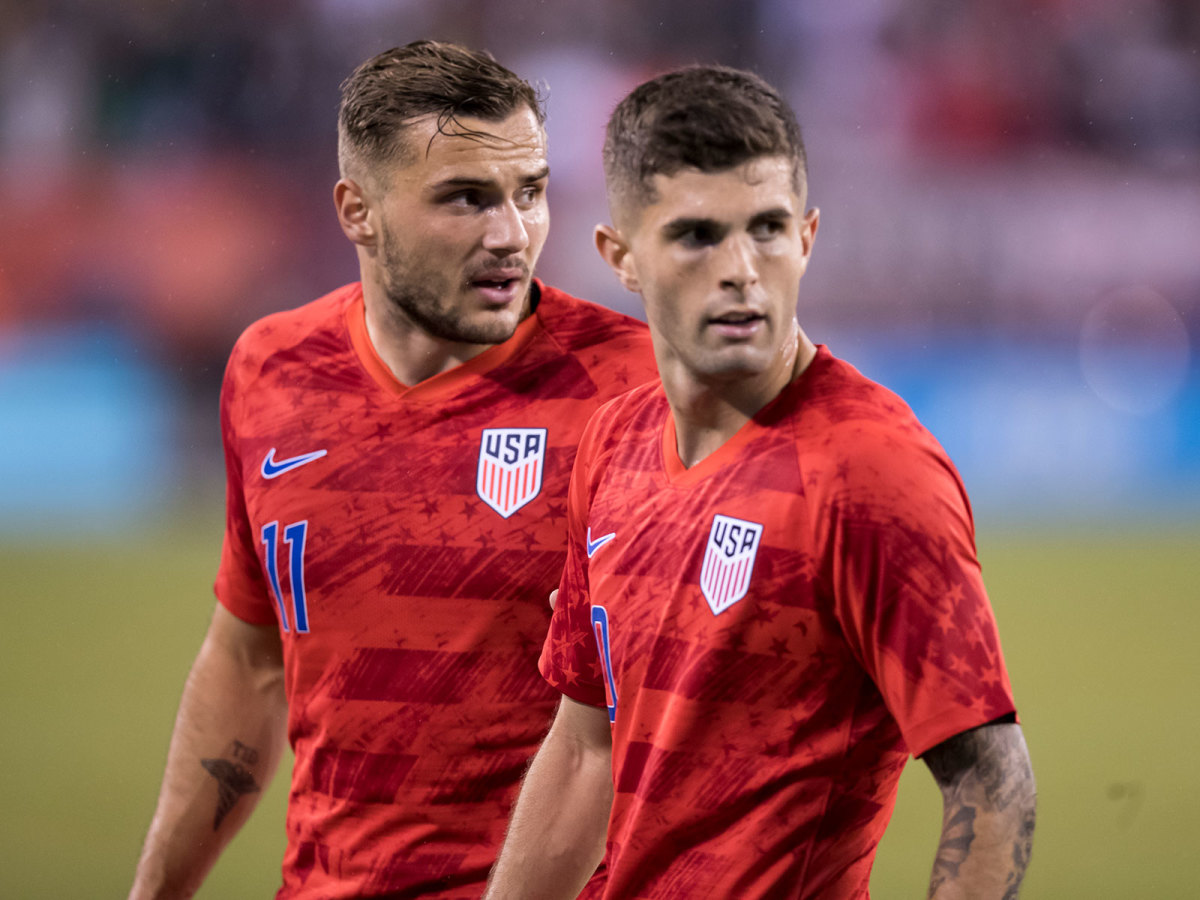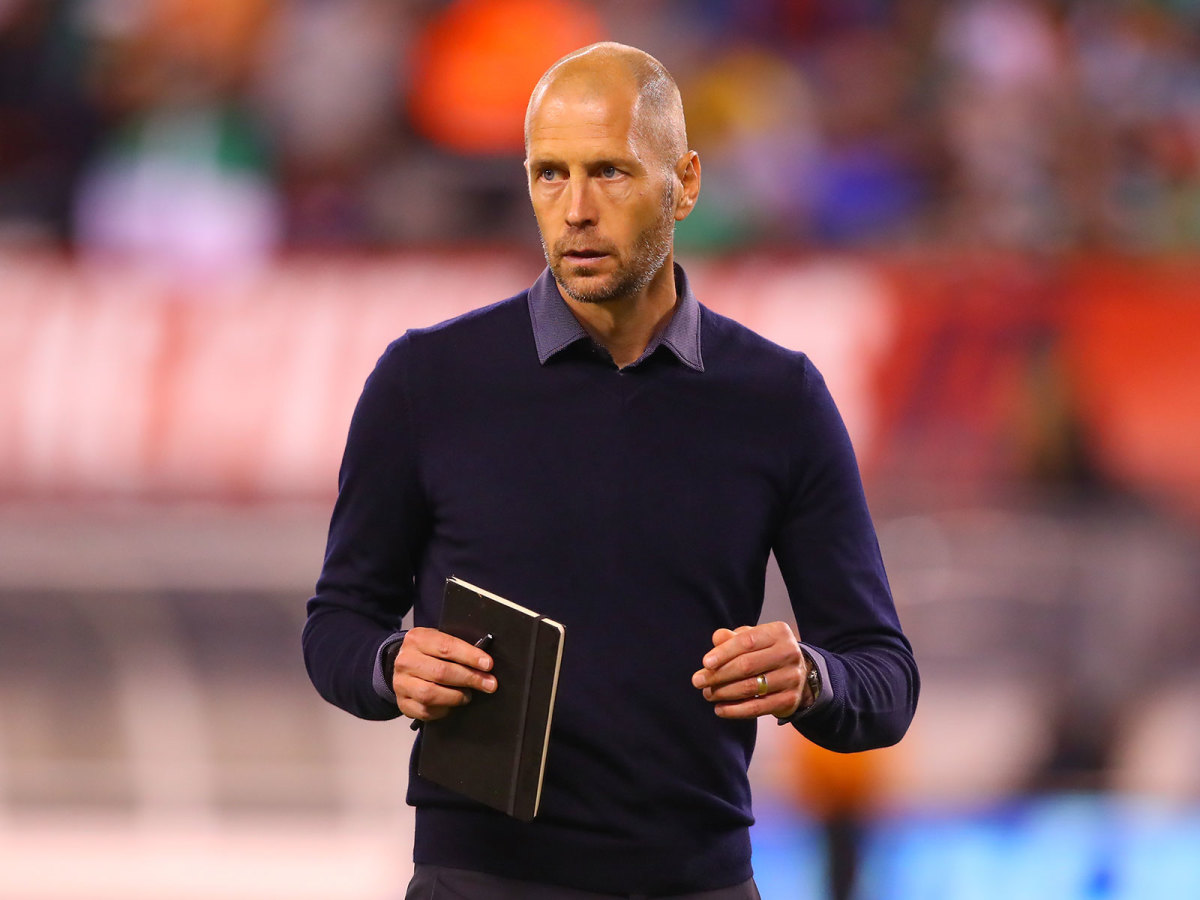The Gap Between Mexico and the USA Is as Wide as It's Been in Years

EAST RUTHERFORD, N.J. — The year was 1999. But the challenge facing the U.S. men’s national team 20 years ago wasn’t much different than the one it has today. The USMNT was recovering from the deep global embarrassment of a World Cup disaster. At home, meanwhile, it was facing unflattering comparisons to a U.S. women’s team that had just energized the nation with a rousing World Cup triumph.
And even though it was 20 years ago, it's easy to remember what happened in ’99 that helped the USMNT rebound that year. First came a convincing 3-0 friendly win against Germany, and yes, it was just a friendly, but it was something to latch onto. Then, in the summer of ’99, the USMNT went on a run in the Confederations Cup in Mexico, beating Germany again, holding Brazil to a tough 1-0 loss and giving Mexico all it could handle for 120 valiant minutes in a semifinal at the Azteca before losing 1-0 in extra time.
The U.S. finished third at that Confederations Cup, and what happened that year kick-started the USMNT on a path that ultimately resulted in the program’s greatest moment, reaching the quarterfinals of World Cup 2002—and beating archrival Mexico 2-0 to get there.
But here’s the problem: Nothing yet has happened in 2019 to give USMNT fans the feeling that they had in 1999. No results have caused them to pump a fist and say, “Yeah, baby, we’re back,” or “The gap is closing with Mexico.”
And in the wake of Friday’s 3-0 friendly loss to Mexico at MetLife Stadium, which followed July’s 1-0 defeat to El Tri in the Gold Cup final, you can’t help but come away thinking the gap between the U.S. and Mexico is yawning right now, as wide as it has been in years.

The frustration was etched on the face of Christian Pulisic after the game. The 20-year-old American star had played relatively well, managing to set off on a few dangerous runs, but his teammates did little to provide creative support. Sometimes Pulisic was surrounded by five Mexican defenders who knew they could afford to lay off the other U.S. players.
Sometimes Pulisic shows little feeling in these postgame interviews, win or lose, but on Friday night he most definitely did.
“We still play with fear against them,” Pulisic said. “And that is what I can’t really live with. So that needs to change. And we’re going to go out and give everything the next time we play them.”
Pulisic added that “I personally didn’t do enough” and that he feels like the U.S. has good players. “But there needs to be a lot more movement and a lot more creativity with the team, and just confidence when we go out and play against good opponents,” he said. “We have to go out and play like we’re good enough to be out there, be confident and play without thinking twice about it. That’s how it needs to be, and that’s just not where we’re at right now.”
In what ways is the gap between the U.S. and Mexico most apparent right now? For starters, look at the teams’ depth. Mexico coach Tata Martino left a raft of talent on the bench to start Friday’s game, including Chucky Lozano, Raúl Jiménez, Guillermo Ochoa and Jonathan Dos Santos—and El Tri still dominated the game from the start.

The U.S. doesn’t have nearly that kind of depth, due mainly to the Lost Generation aged 25 to 30, and when a player like Tyler Adams is missing with an injury, his absence is debilitating to the team. There’s also the sense of a real missed opportunity when the U.S. coach, Gregg Berhalter, opts not to start emerging 19-year-old forward Josh Sargent in favor of using 28-year-old Gyasi Zardes. If Sargent is trusted enough to start games in the Bundesliga for Werder Bremen—and score a fantastic goal last week—you would think he could be trusted enough to start in a USA-Mexico friendly.
But the gap between the U.S. and Mexico registers in other ways, too, and part of that is tied to the “fear” that Pulisic mentioned. Mexico pressed the U.S.’s back line relentlessly for much of the game, and too often the Americans were lacking the composure necessary to deal with it. It’s one thing to ask your guys to play out of the back when possible, but you don’t need to do it every single time, and that lack of judgment led directly to the second Mexico goal, when goalkeeper Zack Steffen gifted El Tri the opportunity (with some help from the U.S. defenders).
Berhalter has a way that he wants his team to play, and ball retention is part of that. But there weren’t many U.S. players on the field who could keep the ball on Friday. It’s not Berhalter’s fault that Darlington Nagbe has turned down several call-ups, but the fact remains that Nagbe’s ball retention could be extremely useful for the style that Berhalter is seeking.

Every national team coach in the world faces a similar challenge: They don’t get very much time with their players. It’s part of the reason why we see less tactical sophistication in the international game than we do at the club level. Berhalter is ambitious in what he’s asking for from these players. It takes time, and sometimes you wonder if maybe the coach is a little too ambitious, if maybe the time isn’t there to do it, or maybe the players aren’t there to do it.
What's clear is that Berhalter really could have used the entirety of 2018 to help install his system, but U.S. Soccer decided to wait a year to hire him in the aftermath of the World Cup qualifying failure.
“Of course, there are frustrations when you lose 3-0,” a glum Pulisic said afterward. “There’s always frustrations. But we have a style of play that we’re setting out and we’re still trying to execute, and obviously today we didn’t pull it off at all times. But in the mix of things there were a few good moments. And that’s all we can take from it and just try to continue to learn.”
And then Pulisic was off, heading back to England, joining five other U.S. players in leaving before Tuesday’s friendly in St. Louis against Uruguay. But you got the sense listening to him that he’s stuck in on this American project, pained by losses like this one yet resolute that the gap between the U.S. and Mexico will narrow at some point.
There will be no moments in 2019 like the USMNT had in 1999, but the objective remains the same: A revival in the World Cup still three years away.
